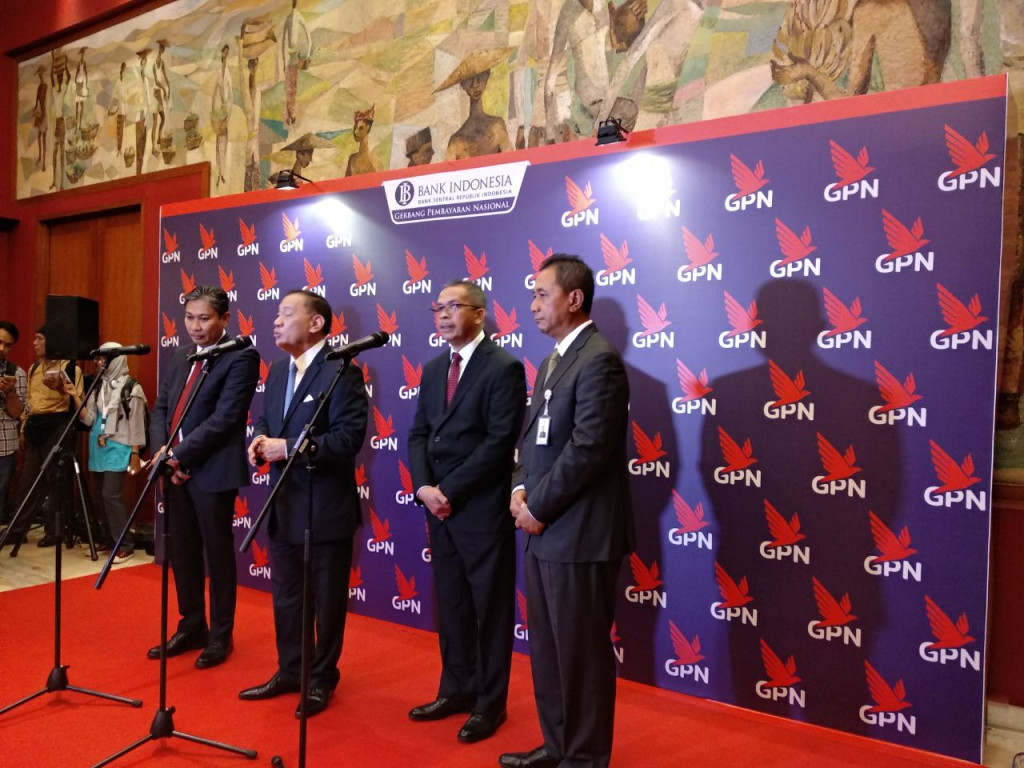E-Commerce Roadmap Series: Bank Indonesia Inaugurates National Payment Gateway
Encouraging interconnection, interoperability and efficiency for cashless transactions
Bank Indonesia inaugurated National Payment Gateway (GPN) as part of a series of e-commerce roadmaps. GPN is a system built by the central bank to realize interconnection between switching and interoperability of national payment systems. People can make non-cash financial transactions easier and cheaper.
Another target of the implementation of GPN is to improve consumer protection through securing customer transaction data in every transaction. The GPN was also developed to ensure the availability and integrity of national payment system transaction data to support the effectiveness of monetary policy transmission, intermediation efficiency, and financial system resilience.
The presence of GPN is used as the backbone for providing non-cash social assistance, electronification of toll roads and public transportation, and inclusive finance and the development of an electronic-based national trading system as mandated in Presidential Regulation No. 74 of 2017 concerning the E-commerce Roadmap.
"Since it was initiated more than 20 years ago, namely in the 1995/1996 National Payment System Blueprint, this morning will be a historic moment because the GPN will be launched and its implementation will begin," explained Bank Indonesia Governor Agus D. Martowardjojo, Monday, (4/12).
For industry, GPN can encourage sharing infrastructure so that the utilization of ATM/EDC terminals can increase and the excess ones can be relocated to areas that are lacking. Investment costs for infrastructure can be diverted to other financing activities. The industry will also be facilitated because of the complexity of the connection, from bilateral between parties, so that it is centralized to the GPN.
"Industry players will be maintained, continue to enjoy profits, but now with rates normal."
As for customers, they can transact from any bank with any payment instruments and channels (any bank, any instrument, any channel). The public is also advised not to have multiple cards to transact.
Non-cash transaction fees or merchant discount rate (MDR) will also decrease, from initially 2-3% to 1% flat per transaction off us (transactions at ATMs or EDCs that are different from the card used). It's just that, continued Agus, customers must use an ATM/debit card with an international logo if they want to transact while abroad.
As the beginning of the existence of GPN, customers will be introduced to ATM/debit cards with the national logo that can be used for domestic transactions and can be accepted at all merchant payment terminals. Gradually, cards with this new logo began to be distributed in early 2018.
GPN system mechanism

In the GPN system, the central bank makes a system consisting of three providers, namely standard institutions, switchingand services. The standards agency is tasked with compiling and managing national payment technology standards set by BI and must be complied with by all industries, using NSICCS for ATM/debit and for electronic money through the application of SAM Multi Applet.
Currently a standard institution has been established and is run by the Indonesian Payment System Association (ASPI). Furthermore, standard institutions will be directed to form legal entities with professional, competent, and independent management.
As for Institutions switching tasked with organizing domestic payment transaction data processing safely and efficiently. At the moment of the launch of the GPN, BI determined four hosting companies switching domestic services, namely Jalin Payment Nusantara, Electronic Payment Artajasa, Rintis Sejahtera, and Alto Network.
"The switching agency we are talking about is different from the one we know so far, because now switching for GPN. There are four institutions that meet the criteria set by BI. To run the GPN, BI could have run it alone, but we prefer to involve actors who are already on the move. BI also gives sides to four companies if they want to invite foreign partners."
Lastly, institution services has four main tasks including maintaining transaction security by ensuring the encryption of transaction data end-to-end, handle transaction disputes, and encourage the expansion of acceptance of non-cash instruments.
Institution services formed and jointly owned by the GPN switching agency and subsidiaries of major industry players, namely BRI, BNI, Bank Mandiri, and BCA which control 75% of the national retail payment transaction share through a consortium. According to Agus, the establishment of this consortium began with the signing of an agreement and it is hoped that it will soon become a legal entity so that it can be fully operational in July 2018.
For the initial stage, the signing of four documents that marked the start of the operationalization of the GPN, namely the consortium agreement to formalize the establishment of the NPG services, four institutions interconnection agreement switching GPN, debit card interoperability agreements, and electronic money interoperability agreements.
Sign up for our
newsletter
